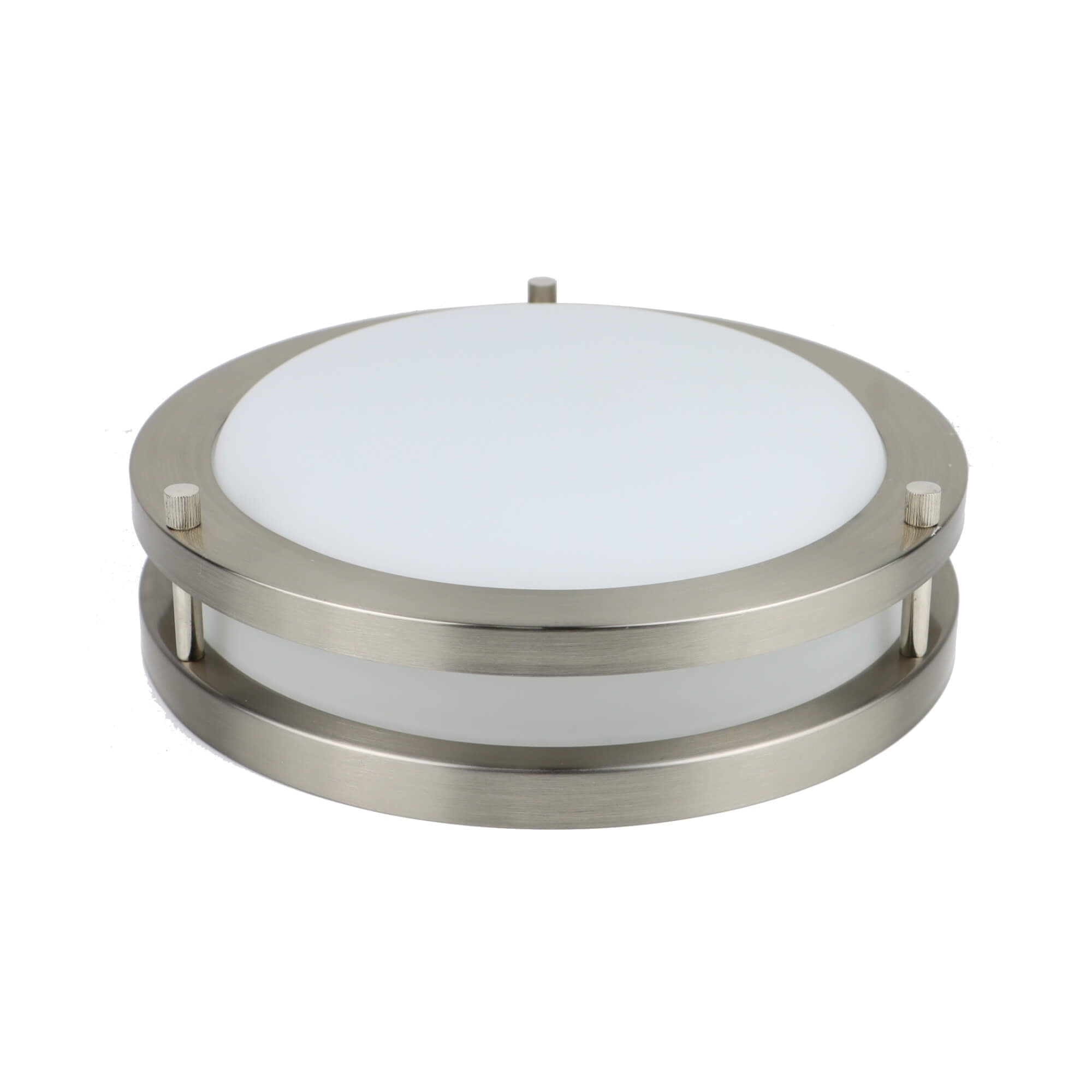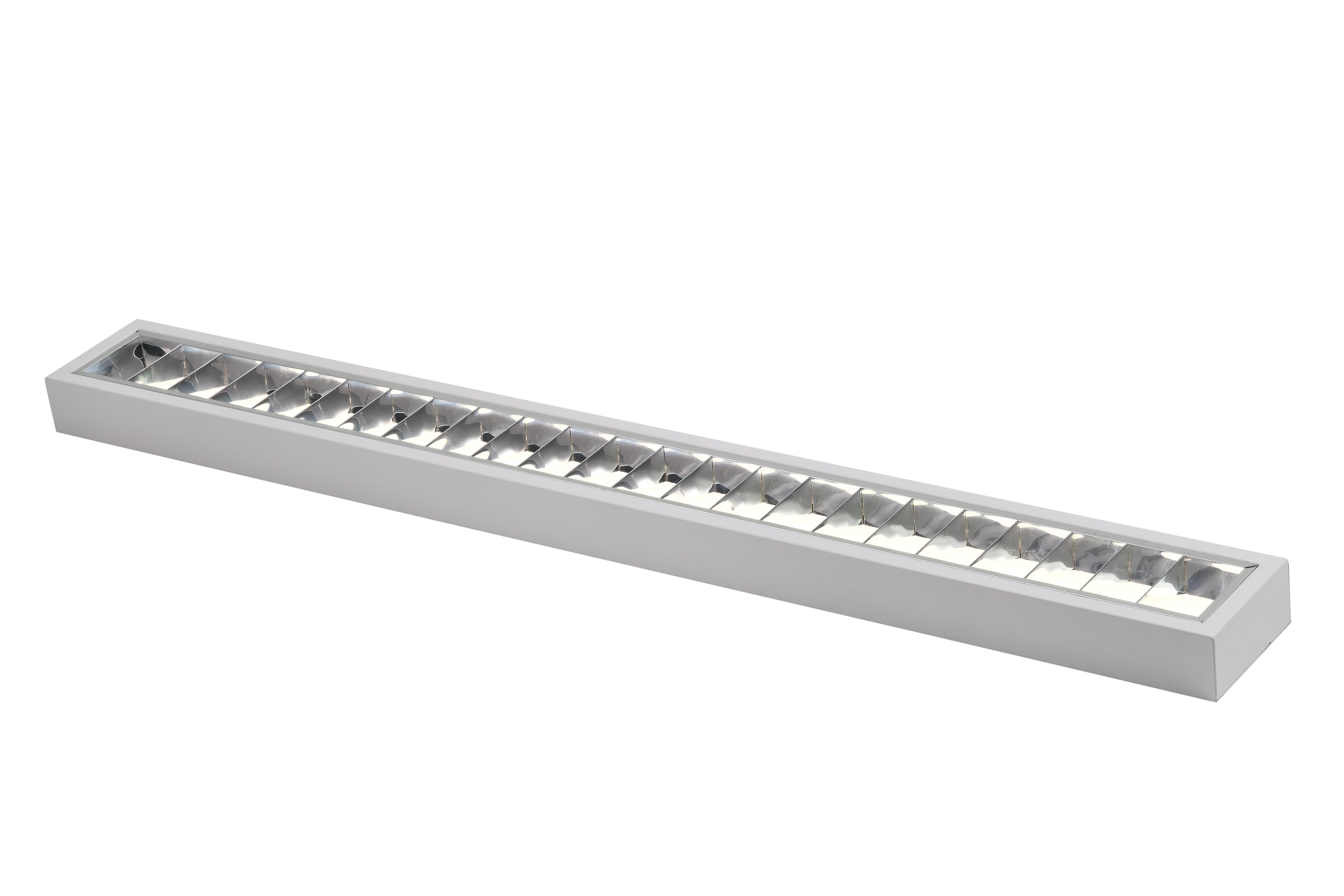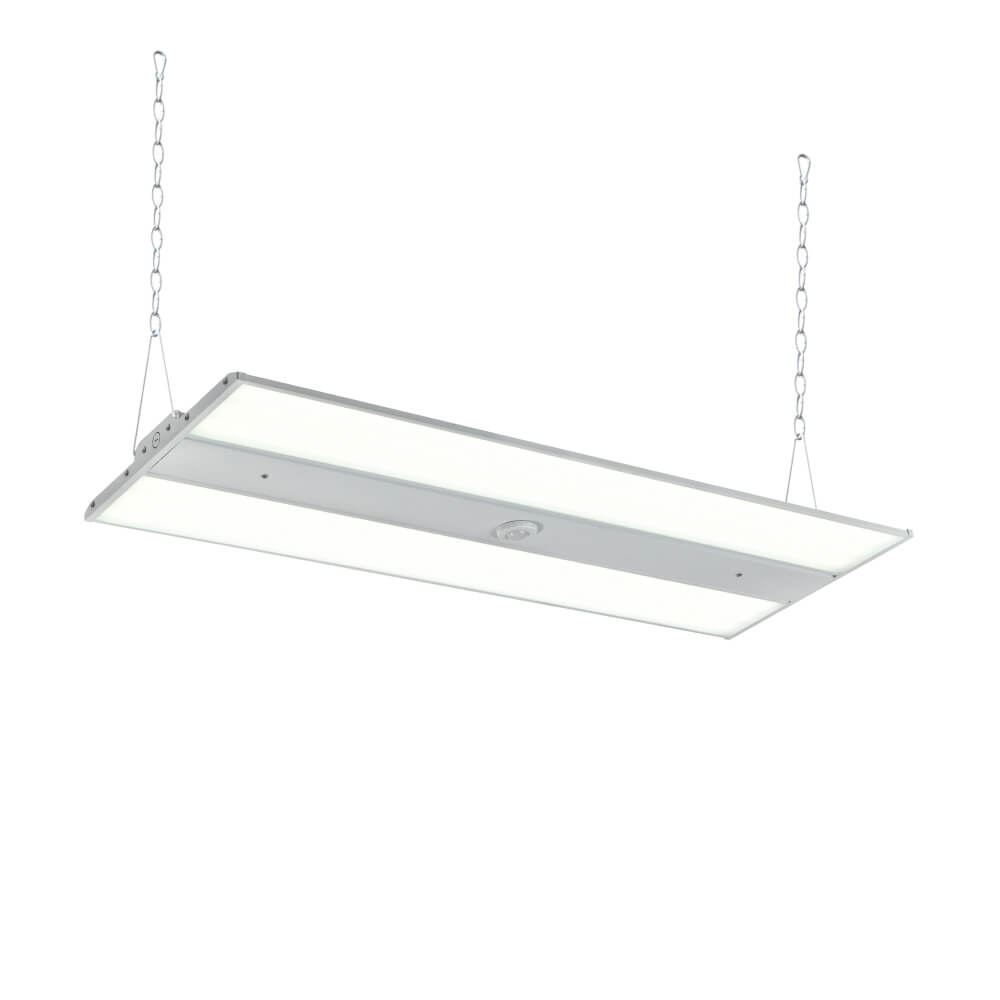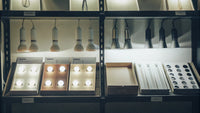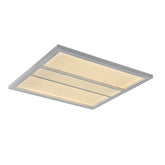Why LED Lights Burn Out Fast & How to Fix It?
LED lights have revolutionized the lighting industry, offering energy efficiency, longlasting performance, and cost savings. However, many users have experienced the frustration of their LED lights burning out faster than expected, undermining these benefits. While LED lights are designed to have an extended lifespan compared to traditional lighting options, various factors can contribute to their premature failure.
In this article, we'll explore the common reasons why LED lights may burn out sooner than anticipated and provide practical solutions to address each issue. From overheating and electrical problems to physical damage and poor-quality components, we'll delve into the root causes and offer reliable strategies to ensure your LED lights live up to their full potential. By understanding and implementing these solutions, you can maximize the longevity of your LED lighting investment.
Overheating Causes LED Lights to Burn Out Fast: The Heat Solution
Excessive heat is one of the primary culprits behind premature LED light failure. LED lights generate heat during operation, and if this heat is not properly dissipated, it can build up and cause irreparable damage to the LED components, significantly reducing their lifespan. To learn more about how LED lights generate heat and how to manage it, read our blog post 'Do LED Lights Get Hot?
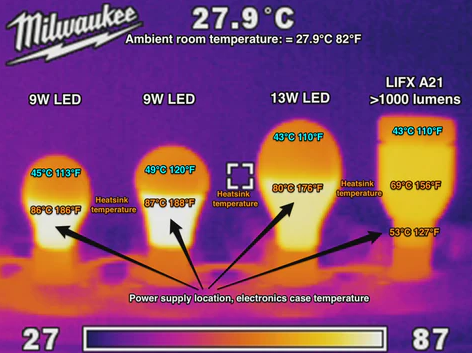
How Overheating Affects LED Lights:
- High temperatures can degrade the semiconductor materials in LEDs, leading to reduced light output and efficiency.
- Thermal stress can cause physical damage, such as cracks or delamination in the LED chips or packaging.
- Overheating accelerates the aging process of LEDs, causing them to deteriorate faster than their rated lifespan.
The Heat Solution:
To prevent overheating and ensure optimal performance and longevity, it's crucial to incorporate proper thermal management strategies for your LED lights.
- Adequate Ventilation: Ensuring sufficient airflow around the LED lights is essential for heat dissipation. Proper ventilation can be achieved through strategic placement, using fans, or installing vents.
- Heatsinks: Attaching heatsinks, which are specialized components designed to absorb and dissipate heat, can significantly improve thermal management for LED lights. Heatsinks help transfer heat away from the LEDs, keeping them cooler.
- Thermal Interface Materials: Using high-quality thermal interface materials, such as thermal pads or thermal grease, can enhance heat transfer from the LEDs to the heatsinks, further improving cooling efficiency.
By implementing these heat management solutions, you can effectively prevent overheating and extend the lifespan of your LED lights. Remember, proper thermal management is crucial for maintaining the optimal performance and longevity of your LED lighting investment.
Electrical Issues That Shorten LED Lights' Lifespan: Voltage and Power Fixes
LED lights are sensitive to electrical fluctuations, making them vulnerable to premature failure if exposed to improper voltage levels or power surges. Electrical issues can cause excessive stress on the LED components, leading to degradation and shortened lifespan.
Common Electrical Issues Affecting LED Lights:
- Voltage Fluctuations: LEDs are designed to operate within a specific voltage range. Deviations from this range can cause overheating, dimming, or complete failure of the LED lights.
- Power Surges: Sudden spikes in electrical current can damage the delicate components within LED lights, potentially causing permanent damage or burnout.
- Incompatible Drivers: LED lights require compatible drivers (power supplies) to function correctly. Using an incompatible or low-quality driver can lead to electrical issues, such as voltage irregularities or insufficient power delivery.
Voltage and Power Fixes:
To address electrical issues and ensure the longevity of your LED lights, implement the following solutions:
- Surge Protectors: Installing surge protectors can safeguard your LED lights from damaging power surges, preventing electrical stress and potential burnout.
- Proper Power Supplies: Invest in high-quality, compatible power supplies or drivers specifically designed for your LED lights. These will ensure consistent voltage delivery and protect against electrical fluctuations.
- Voltage Regulators: Incorporating voltage regulators into your LED light setup can help maintain a stable voltage level, preventing fluctuations that could damage the LEDs.
By addressing electrical issues proactively and implementing these voltage and power fixes, you can significantly reduce the risk of premature LED light failure due to electrical stress. Protect your LED lighting investment by providing a stable and compatible electrical environment.
Physical Damage: Protecting Your LED Lights from Impact, Vibration, and Moisture
While LED lights are generally more durable than traditional lighting options, they are not immune to physical damage, which can lead to premature failure. Impact, vibration, and moisture exposure can compromise the integrity of LED components, causing them to malfunction or burn out prematurely.
Impact and Vibration Risks:
- Impacts from dropped objects or accidental collisions can crack or dislodge LED chips, damaging their electrical connections and causing failure.
- Excessive vibration, such as in industrial or outdoor settings, can loosen internal connections, leading to intermittent operation or complete burnout.
Moisture Damage:
- LED lights are not inherently waterproof, and moisture exposure can cause corrosion, short circuits, and electrical failures.
- High-humidity environments can accelerate the degradation of LED components, reducing their lifespan.
Protecting Your LED Lights:
To safeguard your LED lights from physical damage and extend their longevity, consider the following solutions:
- Protective Housings: Invest in durable, impact-resistant housings or enclosures for your LED lights. These will shield the LED components from physical impacts and moisture ingress.
- Vibration Dampening: If your LED lights are subjected to vibration, use vibration-resistant mounting solutions or vibration dampeners to minimize the effects of movement on the internal components.
- Waterproofing: For outdoor or high humidity environments, chooseED lights with waterproof or weather resistant ratings (IP65 or higher). Alternatively, use waterproof enclosures or sealants to protect your LED lights from moisture damage.
- Careful Handling: Exercise caution when installing, maintaining, or moving LED lights to prevent accidental impacts or drops that could cause physical damage.

By implementing these protective measures, you can significantly reduce the risk of physical damage to your LED lights, ensuring they maintain their structural integrity and continue to operate reliably for their expected lifespan.
Poor Quality LED Lights: Why Cheap Components Don't Last
While LED lights are known for their energy efficiency and long lifespan, not all LED products are created equal. Opting for low-quality, cheap LED lights can lead to disappointingly short lifespans, negating the benefits of this technology.
The Pitfalls of Cheap LED Lights:
- Inferior Components: Low-cost LED lights often use substandard components, such as low-grade LED chips, drivers, and housings, which are more prone to failure.
- Inadequate Thermal Management: Cheap LED lights may lack proper heat dissipation mechanisms, leading to overheating and premature burnout.
- Poor Quality Control: Manufacturers of low-quality LED lights may have lax quality control processes, resulting in inconsistent performance and a higher risk of defects.
- Limited Warranty and Support: Inexpensive LED lights often come with minimal or no warranty coverage, leaving you with little recourse in case of early failure.
Investing in Quality LED Lights:
To ensure a reliable and long-lasting LED lighting solution, it's crucial to invest in high-quality products from reputable manufacturers. Here's why:
- Superior Components: High-quality LED lights use top-tier components, such as high-efficiency LED chips, robust drivers, and durable housings, ensuring optimal performance and longevity.
- Effective Thermal Management: Reputable manufacturers incorporate advanced thermal management solutions, such as heatsinks and intelligent cooling systems, to prevent overheating and extend the lifespan of their LED lights.
- Stringent Quality Control: Trusted brands adhere to strict quality control processes, ensuring consistent performance and minimizing the risk of defects.
- Comprehensive Warranties: Quality LED lights often come with extensive warranty coverage, providing peace of mind and protecting your investment.
While high-quality LED lights may have a higher upfront cost, they offer significant long-term savings and a superior return on investment. By avoiding cheap, low quality LED lights and investing in premium products from reputable manufacturers, you can ensure your LED lights live up to their promised lifespan and deliver reliable, energy-efficient illumination for years to come. To learn more about how to choose the best LED supplier for your wholesale needs, read our blog post 'How To Select The Right LED Supplier For Wholesale Success?
Incorrect LED Light Installation: Avoiding Common Pitfalls
While LED lights are designed for longevity, improper installation can lead to a host of issues that can significantly shorten their lifespan. Failure to follow manufacturer guidelines or adhere to best practices during installation can result in electrical problems, heat buildup, and physical damage, all of which contribute to premature LED burnout.
Common Installation Pitfalls:
- Electrical Wiring Mistakes: Incorrect wiring, poor connections, or incompatible power supplies can cause voltage irregularities, leading to electrical stress and potential failure of the LED components.
- Inadequate Ventilation: Failing to provide sufficient airflow and ventilation around the LED lights can lead to heat buildup, accelerating the degradation of the LED chips and shortening their lifespan.
- Improper Mounting: Incorrect mounting techniques or using unsuitable materials can result in physical damage to the LED lights, such as cracks or loosened connections, leading to premature failure.
- Neglecting Manufacturer Instructions: Overlooking specific guidelines from the manufacturer regarding installation, operation, and maintenance can void warranties and contribute to a shorter lifespan for the LED lights.
Avoiding Installation Pitfalls:
To ensure your LED lights are installed correctly and operate at their full potential, follow these best practices:
- Follow Manufacturer Instructions: Carefully read and adhere to the manufacturer's installation guidelines, including wiring diagrams, ventilation requirements, and mounting specifications.
- Use Compatible Components: Ensure you use compatible power supplies, drivers, and connectors recommended by the manufacturer to avoid electrical incompatibilities and voltage issues.
- Provide Adequate Ventilation: Implement proper ventilation strategies, such as allowing sufficient spacing around the LED lights or incorporating active cooling systems, to prevent overheating.
- Secure Proper Mounting: Use appropriate mounting hardware and techniques to securely install the LED lights, protecting them from physical damage caused by vibration or impact.
By avoiding common installation pitfalls and following best practices, you can significantly reduce the risk of premature LED light failure and ensure your lighting investment operates at peak performance for its intended lifespan.
Final Thoughts: Maximizing Your LED Lights' Lifespan
From overheating and electrical problems to physical damage, poor-quality components, and incorrect installation, we've delved into the root causes that can shorten the lifespan of your LED lights. By understanding these factors and implementing the recommended solutions, you can take proactive steps to maximize the longevity of your LED lighting investment.
By addressing these issues and taking preventative measures, you can enjoy the full benefits of LED lighting technology, including energy savings, long-lasting performance, and reduced environmental impact. Implement the solutions outlined in this article, and you'll be well on your way to achieving the expected lifespan of your LED lights, ensuring a reliable and cost-effective lighting solution for years to come.
Frequently Asked Questions
Q1: How can I tell if my LED lights are overheating?
Signs of overheating include dimming or flickering lights, discoloration of the LED components, or the lights feeling excessively hot to the touch. Regularly checking the temperature of your LED lights can help identify overheating issues before they lead to premature failure.
Q2: Can I use any power supply with my LED lights?
No, it's crucial to use power supplies or drivers that are specifically designed and compatible with your LED lights. Using an incompatible power supply can lead to voltage irregularities, electrical stress, and potential burnout of the LED components.
Q3: How often should I replace the thermal interface materials in my LED lights?
The frequency of replacement depends on the specific materials used and the operating conditions of your LED lights. Consult the manufacturer's recommendations or consider replacing thermal interface materials every 2-3 years as a general guideline.
Q4: Can LED lights be repaired if they burn out prematurely?
In most cases, LED lights are not easily repairable due to their compact and integrated design. If an LED light fails prematurely, it's generally more cost-effective to replace the entire unit, especially if it's still under warranty.
Q5: How can I protect my outdoor LED lights from moisture damage?
Choose LED lights with IP (Ingress Protection) ratings of IP65 or higher, which indicate they are dust-tight and protected against water jets. Alternatively, you can use waterproof housings or enclosures specifically designed for outdoor LED lighting installations.
Q6: Is it safe to use LED lights in high-vibration environments?
LED lights can be used in high-vibration environments, but it's essential to implement proper vibration-dampening solutions, such as vibration-resistant mounting hardware or shock absorbers. This will prevent physical damage to the LED components and ensure a longer lifespan.
